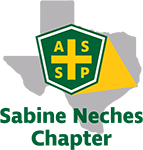62 members of the United Society of Casualty Inspectors in New York who recognized the workplace was changing rapidly resulting in an immediate need to reduce the increasing amount of workplace fatalities and injuries launched the American Society of Safety Engineers on October 14, 1911. This was a daunting task. For instance, the Bureau of Labor Statistics in 1913 documented approximately 23,000 industrial deaths among a workforce of 38 million people, equivalent to a rate of 61 deaths per 100,000 workers. Insurance carriers having employed inspectors to profitably underwrite property and employee liability for worker injuries soon saw a cost benefit relationship between occupational safety engineering and a company’s bottom line. Thereby they began to meet and share information on best practices in an effort to reduce workplace risk.
Today ASSP continues to provide its members, employers, employees, the general public and the media with the most current information and professional development programs on all aspects of the occupational safety, health and environmental field. This is done through seminars, symposiums, local chapter meetings, conferences, the ASSP web site, the ASSP Foundation and ongoing external communications. ASSP also develops nationally and even, internationally recognized safety standards. ASSP is the oldest and largest professional safety and health organization and is dedicated to protect people, property and the environment. Its more than 38,000 members manage, supervise, and consult on safety, health and environmental issues in all industries, government, education and insurance.
In 1946, our nation was morning the many losses during World War II and many mothers and daughters were referred to as “Rosie the Riveter”. In many cases our factories and manufacturing facilities experienced a dramatic shift in skill level, experience, and gender of the work force. The acronyms OSHA, CSP, and TCEQ were light years from existence. The shores of the Sabine and Neches rivers were thriving with industry, including shipbuilding, petrochemicals and logging to name a few. The Beaumont area had definitely earning its name “Boom Town” and companies from abroad now looked to the region for expansion. Despite the country’s adversity and lack of governing forces a few individuals recognized the need for networking of people and ideas to improve safety in the work place. On February 28, 1946 the Sabine Neches Chapter of the American Society of Safety Professionals (SNC-ASSP) was chartered.
It’s been 60 years since SNC-ASSP was chartered and our chapter has seen many changes in leadership and territorial boundaries. The once obsolete acronyms now guide industry standards and define the term “Safety Professional”. Today, independent icons of industry merge faster that the printer can change letterhead and organizational structure can be defined. The term safety professional has taken on a whole new meaning and we now use analogies like “behavioral process” and “root cause analysis”, and many more. We have come a long way; yet continue to strive for a goal of zero accidents or incidents.
